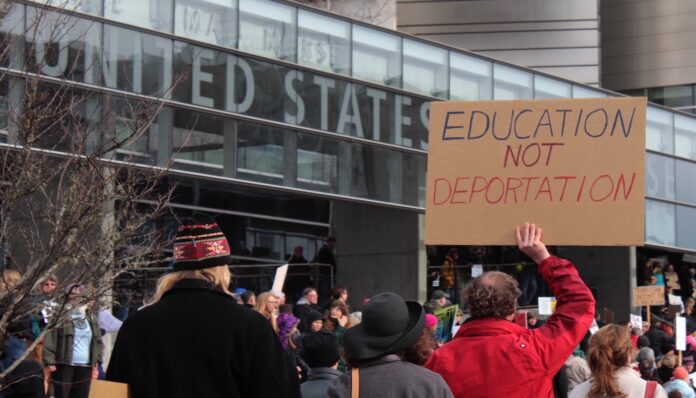
“Clear rules and a European standard,” EU Home Affairs Commissioner Ylva Johansson has recently said in Luxembourg. In other words, it is not possible to address the issue of migrants with only general recommendations. Such position is tied to the interior ministers of the twenty-seven, but now the European Parliament is going to discuss it in detail. The new rules should should be practiced from 2024, this situation immediately appeared very harsh.
Migrants, treatment based on origin
The position of migrants arriving from countries considered safe enough will be screened at the border on a case-by-case basis with rapid procedures and any refoulement will be immediate. The countries concerned are India, North Macedonia, Moldova, Vietnam, Tunisia, Bosnia and Herzegovina, Serbia and Nepal. Detention is envisaged in special detention centres. Such centres will be set up on the borders of the Union, when the expulsions cannot be immediate.
For migrants from high risk areas – such as Syrians, Yemenis or Belarusians – it will be easier to get refugee status. The migrants admitted to the Union will be distributed among the twenty-seven countries by adopting a criterion proportional to their demographic situation. The states that want not to accept them will have to pay a contribution of around 20,000 euros per migrant to a special fund.
Tough positions and the unsolved issues
The legislation immediately resulted very harsh, but the ministers who approved it said that the alternative would have been to see the rise of new walls within the EU. Poland and Hungary refuse to apply the legislation which, on the other hand, is considered too restrictive and harmful to the right of asylum. The problem of children and unaccompanied minors remains unresolved. It seems that it will be up to the Member State that rejects the migrant to choose the country that is willing to welcome them outside the EU.
The right to asylum, unaccompanied minor migrants
Now there is discussion whether this new legislation violates the right to asylum. Especially in Germany where children and unaccompanied minors are not rejected. The new legislation was approved by a majority of fifteen of the twenty-seven states of the Union and therefore a rather bumpy path is expected when the European Parliament decides. Furthermore there are no real changes to the Dublin regulation, because the countries of first reception would bear the heaviest burdens as far as migration matters are concerned.
_____________________________________________________________________________
“Regole chiare e uno standard europeo” ha dichiarato recentemente a Lussemburgo il Commissario europeo per gli Affari Interni Ylva Johansson. In altre parole, non è possibile affrontare la questione dei migranti solamente con generiche raccomandazioni. La presa di posizione è dei ministri degli interni dei ventisette, ma adesso toccherà al parlamento europeo discuterla nei dettagli. Le nuove regole dovrebbero entrare in vigore dal 2024 e sono apparse subito molto dure.
Accoglienza ai migranti, trattamento in base alla provenienza
La posizione dei migranti che arrivano da Paesi considerati abbastanza sicuri sarà vagliata al confine caso per caso con procedure rapide e l’eventuale respingimento sarà immediato. I Paesi in questione fino ad oggi sono stati India, Macedonia del Nord, Moldavia, Vietnam, Tunisia, Bosnia ed Erzegovina, Serbia e Nepal.È previsto il trattenimento in speciali centri di detenzione, che saranno allestiti ai confini dell’Unione, nel caso in cui l’espulsione non possa essere immediata.
Per i migranti provenienti da zone ad alto rischio – come siriani, yemeniti o bielorussi sarà più facile ottenere lo status di rifugiato. I migranti ammessi nell’Unione saranno ripartiti fra i ventisette Paesi adottando un criterio proporzionale rispetto alla loro situazione demografica. Gli Stati che decidessero di non accettarli dovranno pagare a un apposito fondo un contributo di 20.000 euro circa per migrante.
Posizioni dure e questioni irrisolte
La normativa è apparsa subito molto dura, ma i ministri che la hanno approvata si sono giustificati dicendo che l’alternativa sarebbe stata quella di assistere al sorgere di nuovi muri all’interno della UE. Polonia e Ungheria si rifiutano di applicare la normativa che, invece, sull’altro fronte viene ritenuta troppo restrittiva e lesiva del diritto d’asilo. Il problema dei bambini e dei minori non accompagnati resta irrisolto. Sembra che spetterà allo Stato membro che respinge il migrante la scelta del Paese che si mostrasse disponibile all’accoglienza fuori dalla UE.
Il diritto di asilo, l’accoglienza per i minori non accompagnati
Adesso si discute se questa nuova normativa violi il diritto d’asilo. Soprattutto in Germania dove sembra non rinunciabile la scelta di esentare bambini e minori non accompagnati dai respingimenti. La nuova normativa è stata approvata a maggioranza da quindici dei ventisette Stati dell’Unione e quindi si prevede un percorso piuttosto accidentato quando sarà il Parlamento europeo a pronunciarsi. Inoltre, nella sostanza, non si vedono modifiche reali al regolamento di Dublino, perché ai Paesi di prima accoglienza toccherebbero gli oneri più gravosi del fronteggiamento della migrazione.
Leggi anche: Love of war and disregard for tragedies in the sea/ Guerra, ricchezza e silenzio sui tragici naufragi







